Dongkyu Choi
LLM-Based Multi-Hop Question Answering with Knowledge Graph Integration in Evolving Environments
Aug 28, 2024



Abstract:The rapid obsolescence of information in Large Language Models (LLMs) has driven the development of various techniques to incorporate new facts. However, existing methods for knowledge editing still face difficulties with multi-hop questions that require accurate fact identification and sequential logical reasoning, particularly among numerous fact updates. To tackle these challenges, this paper introduces Graph Memory-based Editing for Large Language Models (GMeLLo), a straitforward and effective method that merges the explicit knowledge representation of Knowledge Graphs (KGs) with the linguistic flexibility of LLMs. Beyond merely leveraging LLMs for question answering, GMeLLo employs these models to convert free-form language into structured queries and fact triples, facilitating seamless interaction with KGs for rapid updates and precise multi-hop reasoning. Our results show that GMeLLo significantly surpasses current state-of-the-art knowledge editing methods in the multi-hop question answering benchmark, MQuAKE, especially in scenarios with extensive knowledge edits.
A Probabilistic-Logic based Commonsense Representation Framework for Modelling Inferences with Multiple Antecedents and Varying Likelihoods
Dec 15, 2022



Abstract:Commonsense knowledge-graphs (CKGs) are important resources towards building machines that can 'reason' on text or environmental inputs and make inferences beyond perception. While current CKGs encode world knowledge for a large number of concepts and have been effectively utilized for incorporating commonsense in neural models, they primarily encode declarative or single-condition inferential knowledge and assume all conceptual beliefs to have the same likelihood. Further, these CKGs utilize a limited set of relations shared across concepts and lack a coherent knowledge organization structure resulting in redundancies as well as sparsity across the larger knowledge graph. Consequently, today's CKGs, while useful for a first level of reasoning, do not adequately capture deeper human-level commonsense inferences which can be more nuanced and influenced by multiple contextual or situational factors. Accordingly, in this work, we study how commonsense knowledge can be better represented by -- (i) utilizing a probabilistic logic representation scheme to model composite inferential knowledge and represent conceptual beliefs with varying likelihoods and (ii) incorporating a hierarchical conceptual ontology to identify salient concept-relevant relations and organize beliefs at different conceptual levels. Our resulting knowledge representation framework can encode a wider variety of world knowledge and represent beliefs flexibly using grounded concepts as well as free-text phrases. As a result, the framework can be utilized as both a traditional free-text knowledge graph and a grounded logic-based inference system more suitable for neuro-symbolic applications. We describe how we extend the PrimeNet knowledge base with our framework through crowd-sourcing and expert-annotation, and demonstrate its application for more interpretable passage-based semantic parsing and question answering.
Improving Object Permanence using Agent Actions and Reasoning
Oct 01, 2021
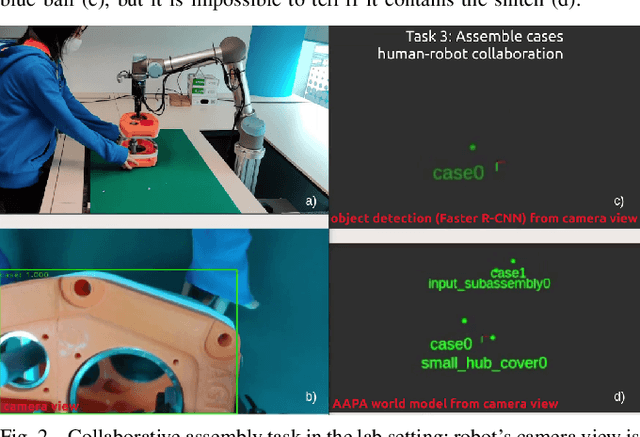
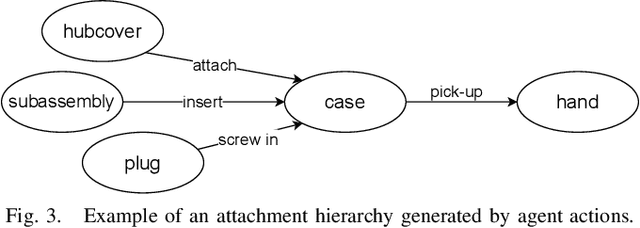
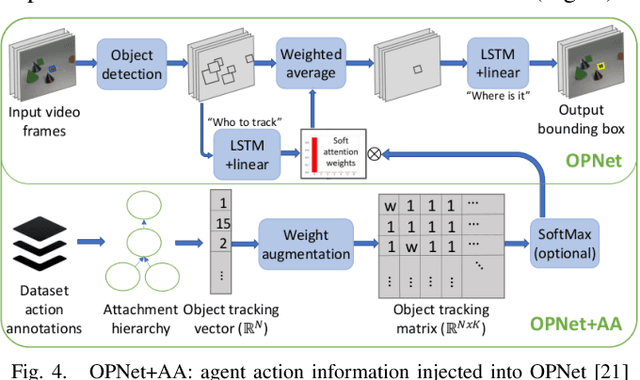
Abstract:Object permanence in psychology means knowing that objects still exist even if they are no longer visible. It is a crucial concept for robots to operate autonomously in uncontrolled environments. Existing approaches learn object permanence from low-level perception, but perform poorly on more complex scenarios, like when objects are contained and carried by others. Knowledge about manipulation actions performed on an object prior to its disappearance allows us to reason about its location, e.g., that the object has been placed in a carrier. In this paper we argue that object permanence can be improved when the robot uses knowledge about executed actions and describe an approach to infer hidden object states from agent actions. We show that considering agent actions not only improves rule-based reasoning models but also purely neural approaches, showing its general applicability. Then, we conduct quantitative experiments on a snitch localization task using a dataset of 1,371 synthesized videos, where we compare the performance of different object permanence models with and without action annotations. We demonstrate that models with action annotations can significantly increase performance of both neural and rule-based approaches. Finally, we evaluate the usability of our approach in real-world applications by conducting qualitative experiments with two Universal Robots (UR5 and UR16e) in both lab and industrial settings. The robots complete benchmark tasks for a gearbox assembly and demonstrate the object permanence capabilities with real sensor data in an industrial environment.
Maintaining a Reliable World Model using Action-aware Perceptual Anchoring
Jul 07, 2021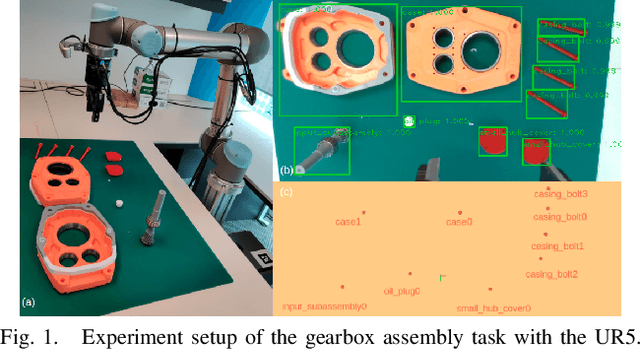

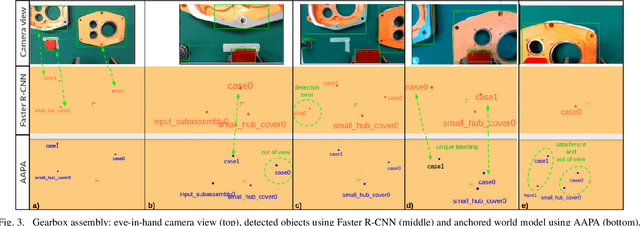
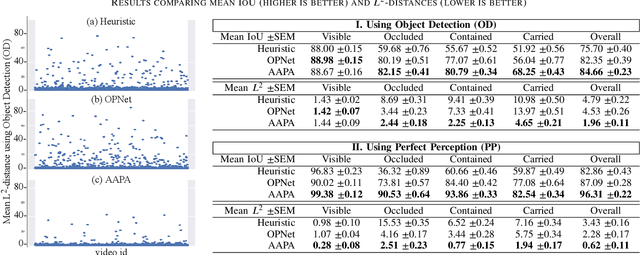
Abstract:Reliable perception is essential for robots that interact with the world. But sensors alone are often insufficient to provide this capability, and they are prone to errors due to various conditions in the environment. Furthermore, there is a need for robots to maintain a model of its surroundings even when objects go out of view and are no longer visible. This requires anchoring perceptual information onto symbols that represent the objects in the environment. In this paper, we present a model for action-aware perceptual anchoring that enables robots to track objects in a persistent manner. Our rule-based approach considers inductive biases to perform high-level reasoning over the results from low-level object detection, and it improves the robot's perceptual capability for complex tasks. We evaluate our model against existing baseline models for object permanence and show that it outperforms these on a snitch localisation task using a dataset of 1,371 videos. We also integrate our action-aware perceptual anchoring in the context of a cognitive architecture and demonstrate its benefits in a realistic gearbox assembly task on a Universal Robot.
* 7 pages, 3 figures
Direct Visual-Inertial Odometry with Semi-Dense Mapping
Oct 04, 2019



Abstract:The paper presents a direct visual-inertial odometry system. In particular, a tightly coupled nonlinear optimization based method is proposed by integrating the recent advances in direct dense tracking and Inertial Measurement Unit (IMU) pre-integration, and a factor graph optimization is adapted to estimate the pose of the camera and rebuild a semi-dense map. Two sliding windows are maintained in the proposed approach. The first one, based on Direct Sparse Odometry (DSO), is to estimate the depths of candidate points for mapping and dense visual tracking. In the second one, measurements from the IMU pre-integration and dense visual tracking are fused probabilistically using a tightly-coupled, optimization-based sensor fusion framework. As a result, the IMU pre-integration provides additional constraints to suppress the scale drift induced by the visual odometry. Evaluations on real-world benchmark datasets show that the proposed method achieves competitive results in indoor scenes.
 Add to Chrome
Add to Chrome Add to Firefox
Add to Firefox Add to Edge
Add to Edge